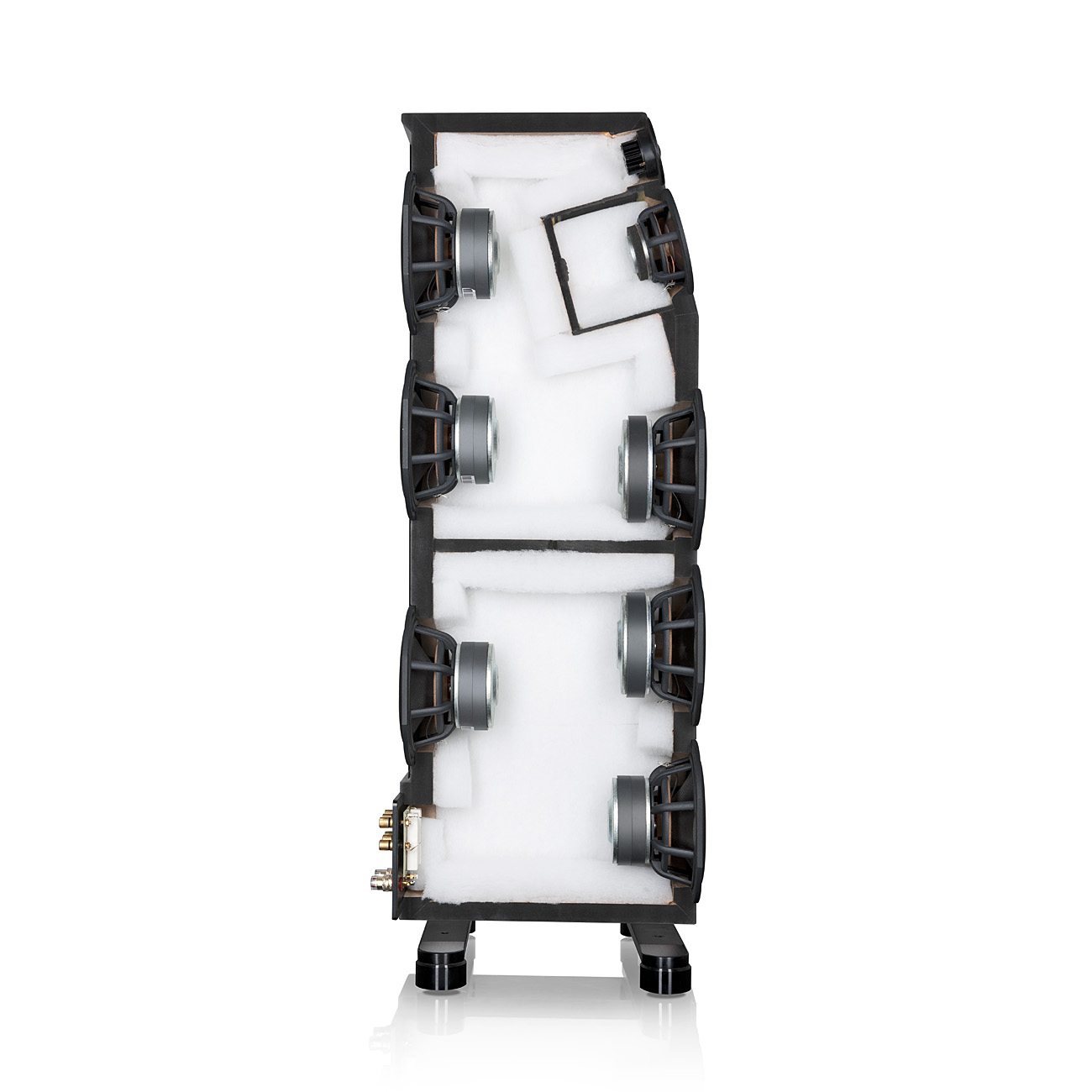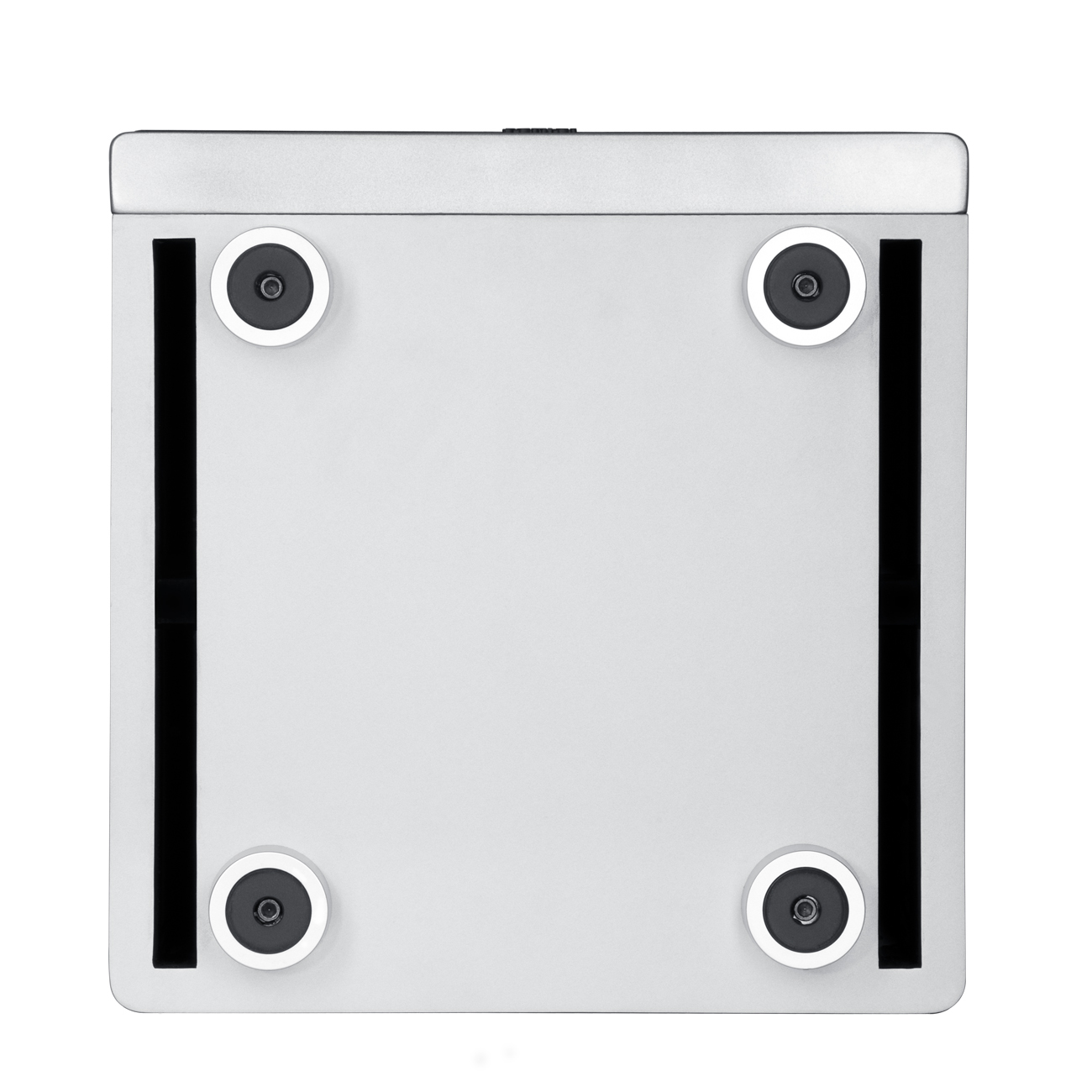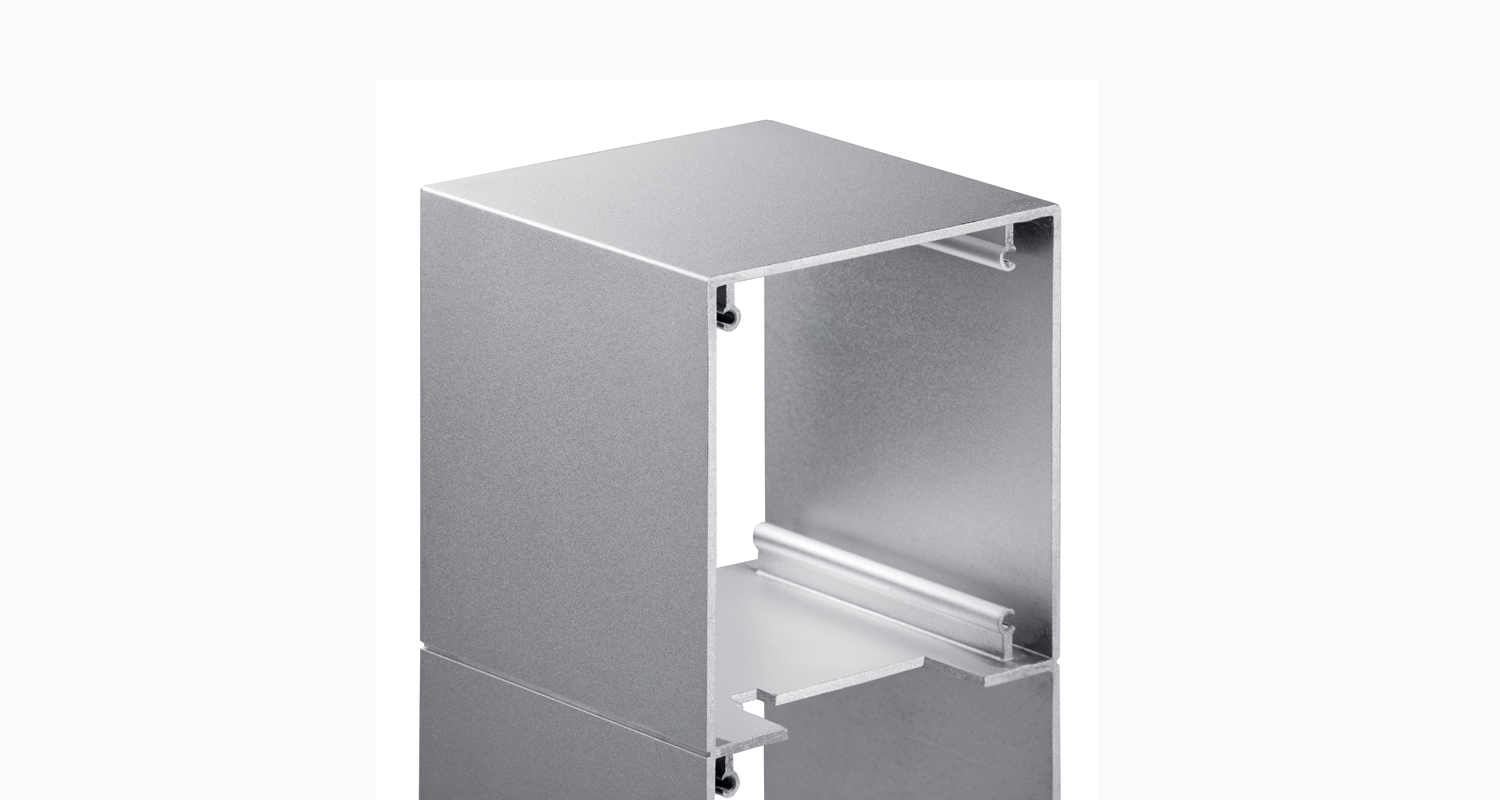Anyone looking to buy a loudspeaker who takes the time to read the descriptions will come across details for loudspeaker enclosures — their dimensions and what they are made of along with whether the construction is “sealed” or has a “bass reflex” port. This article explains what is meant by these terms and how enclosures affect a loudspeaker’s sound.
Loudspeaker enclosures: More than attractive cabinets
Loudspeakers are comprised of many distinct parts: At least one driver, a crossover, and – with active loudspeakers – an integrated amplifier. Of course, all of these components need to be somehow brought together and contained which is where the enclosure comes in.
Still it would be wrong to think that that’s all a loudspeaker enclosure does. It also enhances and guides the sound from the drivers and even affects the loudspeaker’s overall efficiency.

How speaker enclosures influence sound
Loudspeaker enclosures influence a loudspeaker’s sound in the following ways:
- Prevent front-firing sound waves from interfering with rear-firing waves
- Enhance the sound produced by bass drivers
- Absorb the vibrations from the drivers
- Direct the dispersion of the sound
Sound wave interference
If we look at the first reason for using speaker enclosures – to prevent the front and rear-firing waves from canceling each other – we first need to make sure we understand what is meant by this. The best way to look at the problem is to remember that sound waves have peaks, consisting of high air pressure, and troughs, consisting of low air pressure. The air changes from high to low pressure at a speed determined by the pitch of the sound.
Where this waveform is at any time is referred to as its “phase.” A driver pushing air from both its front and back will create sound waves that are 180 degrees out of phase with each other. That means that their peaks and troughs are in exact opposite alignment. This becomes a problem if the two different sound waves meet, a phenomenon known as interference. If the peaks and troughs are in exact alignment, the sound can be enhanced. However if the two sound waves have opposing peaks and troughs, the sound will become distorted. If the peaks and troughs are exactly opposite, the sound can even be canceled out.
Loudspeaker baffles and open baffle speakers
Drivers are usually placed on a panel known as a baffle. Placing a driver on a baffle protects the driver, provides a mounting surface, and also prevents destructive interference. This is because the sound waves have further to travel from the front to the back. However, simply mounting a driver on a large baffle is not enough: The baffle needs to be more than half the sound’s wavelength at its shortest point in order to effectively prevent sound waves from traveling around it.
Creating a baffle large enough to prevent sound waves from canceling each other out becomes impractical with bass frequencies. Consider that a sound wave at 40 Hz will be over 8 meters long! The practical solution that allows a speaker to be placed in the average home is therefore to close off the back of the driver completely from the front by surrounding the back of the driver in a cabinet.
In this way, an enclosure becomes necessary for at least the bass tones. An open baffle speaker can, however, still be perfectly fine sound solution, at least when it comes to reproducing the higher frequencies. Open baffle speakers produce a very natural sound, for instance, free from any cabinet coloration. Lacking an enclosure, they will also be lighter and easier to transport.
The basic pros and cons of open baffle speakers
- Pros: The baffle can be much smaller for easier room placement, they are easier to construct with DIY kits, there is no “cabinet coloration”
- Cons: An extremely large baffle is required for low frequencies, the “room coloration” of the sound can become problematic
- Use: With portable speakers
For these reasons, the vast majority of speakers purchased for home use have enclosures. When it comes to enclosures, however, there are two basic types: Sealed and ported.
Sealed enclosures prevent destruction interference
As the name indicates, this type of enclosure is a completely sealed, airtight box around the back of the driver that prevents sound waves from the back of the driver from interfering with those from the front. One problem with this design, however is that the enclosure itself can create unwanted resonances that color the sound. These resonances, however, can be kept in check by the use of low-resonance materials (such as aluminium and wood) for the enclosure as well as insulating materials such as sheep’s wool inside the enclosure.
The basic pros and cons of sealed enclosures
- Pros: Simple, space-saving construction, precise playback of even the deepest frequencies, good power handling, excellent transient response, no wind noise (as with ported enclosures)
- Cons: Require more power to overcome the internal air pressure = less efficient
- Use: Ideal for high-end loudspeakers like Teufel’s Definion 5Opens in new tab
Ported enclosures for strong bass
Unlike sealed enclosures, ported (also known as “vented” or “bass reflex” enclosures) include at least one tube-like opening or vent connecting the interior of the enclosure to the outside. These enclosures not only enable a deep bass frequency, but enhance it through the vent or tube. This works in the same way as blowing through the opening of a Coke bottle and as with a bottle, the size of the bottle and contents will affect the sound. It is therefore very important that the vent or port on a bass reflex speaker be precisely tuned to the natural low end of the driver.

The basic pros and cons of ported enclosures
- Pros: Higher volumes, stronger bass, and compact enclosure size, greater efficiency than with sealed enclosures
- Cons: More difficult to achieve a clean and accurate frequency response, less precise and “boomier” bass (which some may actually see as an advantage), bass reflex vents or tubes that are not properly designed can lead to “wind noise”
- Use: Subwoofers and compact speakers
Teufel Audio has developed a proprietary Air Stream Bass technologyOpens in new tab for the elimination of wind noise with bass reflex enclosures. Most Teufel subwoofers include these specially adapted vents – one of the things that has given Teufel a reputation for producing especially powerful and punchy subwoofers.
So which enclosure is right for you?
Just about any style of speaker enclosure – or even a speaker with no enclosure – can deliver excellent sound. However, certain types of construction are preferable for certain uses. If you’re looking for a high-end stereo speaker for listening to classical music and jazz, a sealed enclosure might be the right choice. Many high-end loudspeakers even contain wave guides for the better dispersion of the treble range. For bookshelf speakers capable of really pounding out the bass, bass reflex speakers with well-tuned ports are the way to go. The important thing is to purchase your speakers from a manufacturer who understands both types of enclosure and who knows when to employ them and how best to adapt them.
All pictures: Property of Teufel Audio



